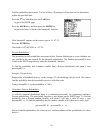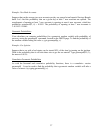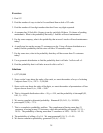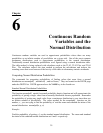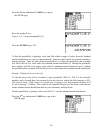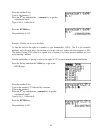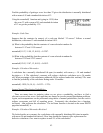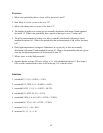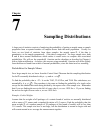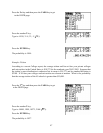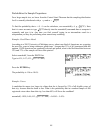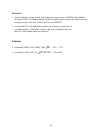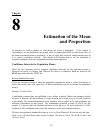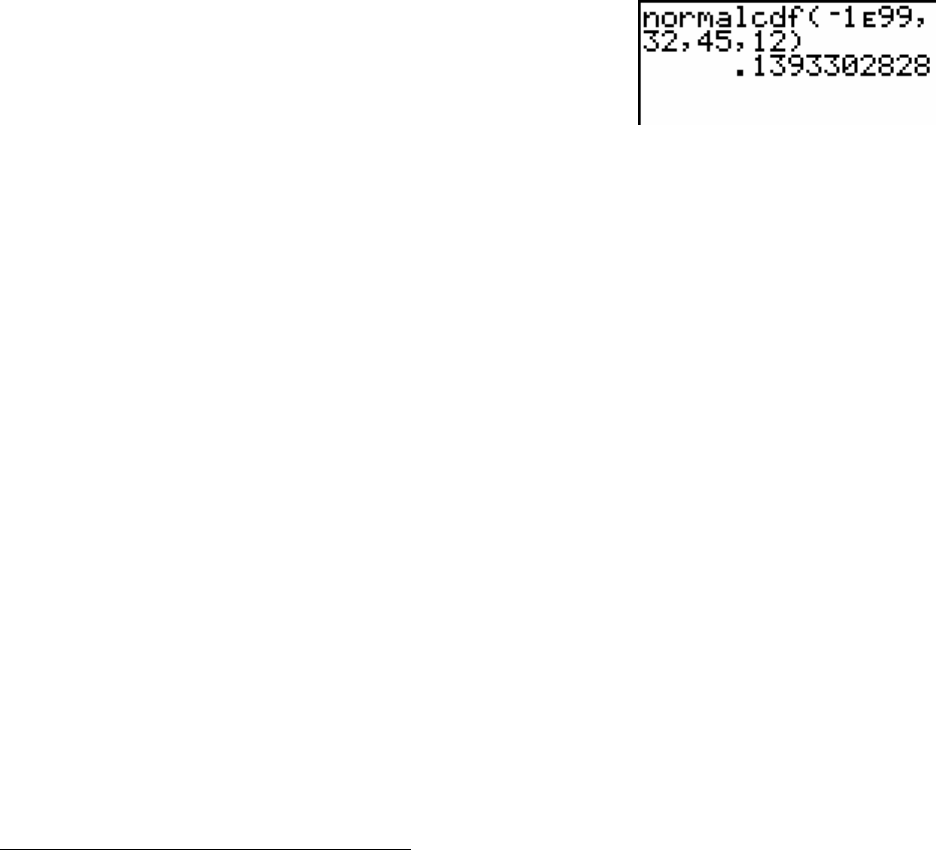
Find the probability of getting a score less than 32 given the distribution is normally distributed
with a mean of 45 and a standard deviation of 12.
Using the normalcdf( function and typing in -1E99, then
the score 32 with a mean of 45 and standard deviation
of 12 we get the probability .139.
Example: Soda Cans
Suppose that the contents (in ounces) of a soda can labeled “12 ounces” follows a normal
distribution, with mean 12 and standard deviation 0.015.
(a) What is the probability that the contents of a can selected at random lie
between 11.97 and 11.99 ounces?
normalcdf(11.97, 11.99, 12, 0.015) = 0.2297.
(b) What is the probability that the contents of a can selected at random lie
between 12.02 and 12.07 ounces?
normalcdf(12.02, 12.07, 12, 0.015) = 0.0912.
Example: Calculator Warranties
A calculator has a normally distributed life-span (in months) with mean µ = 54 and standard
deviation σ = 8. The calculator’s warranty will replace a defective calculator up to 36 months
old. What percentage of the calculators produced will be replaced under this warranty? We want
to find the probability of the calculator lasting under 36 months:
normalcdf(−1E99, 36, 54, 8) = 0.0122 = 1.22%.
Inverse Normal Distribution Probabilities
There are many times in statistics where we are given a probability, and have to find a
relevant z-score or raw score. Such problems are known as inverse normal distribution problems.
Again, such computations can be performed using tables of normal probabilities, but the work is
tedious, errorprone, and full of rounding errors. Fortunately the calculator has a function,
invNorm( , that performs the calculation. The invNorm function is located on the same DISTR
page that normalcdf( is.
Example: Calculator Warranties Revisited
We looked earlier at a warranty for a calculator with a normally distributed life-time in months
with mean 54 and standard deviation 8. How long should the warranty offer replacement for
defective calculators if we want to replace at most 1% of the calculators?
43




